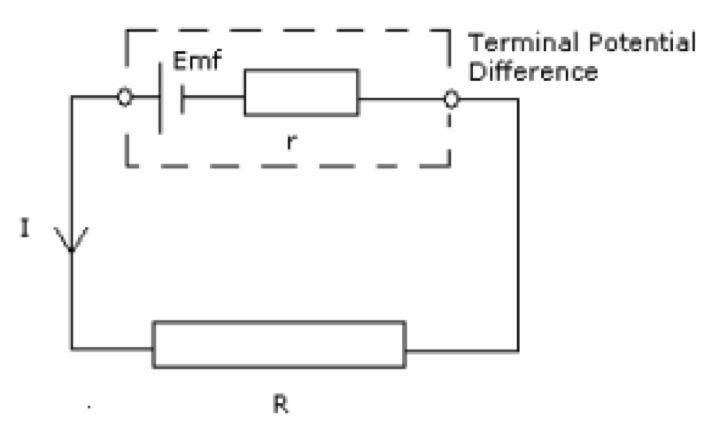Cards In This Set
| Front | Back |
|
5.1.1 Define electric potential difference.
|
² Electric potential difference: work done per unit charge to move a
positive test charge between A and B.
²
Joule / coulomb = Volt
|
|
5.1.2 Determine the change in potential energy when a charge moves between two points at different potentials.
|
²
The change in the electrical potential energy = the
work done
²
Moving from point A (low EP) to point B (high EP)makes
charge q gain electrical potential energy
² △potential energy
= F * d
= E * q * d
|
|
5.1.3 Define the electronvolt.
|
² The energy acquired by an electron as it moves through a potential
difference of 1 volt.
² 1 eV = 1.6 x 10-19J
|
|
N
|
N
|
|
5.1.5 Define electric current.
|
²
The flow of charged particles through a material when
a potential difference is applied across it.
²
Rate of flow of charge
²
Unit: Ampere (A)
²
Conventional <-> electron flow
|
|
5.1.6 Define resistance.
|
²
a measure of how difficult a charge can flow in a material
²
Unit: Ohms (Ω) R = V/I
|
|
5.1.8 State Ohm’s law.
|
²
Provided that the physical conditions such as
temperature are kept constant, the resistance is constant over a wide range of
applied potential differences and therefore the potential difference is
directly proportional to the current.
²
potential
difference α current.
²
Voltage =
Current * Resistance
|
|
5.1.9 Compare ohmic and non-ohmic behaviour.
|
 ² In ohmic behavior, V and I are proportional to each other. ² In non-ohmic behavior, V and I are not proportional to each other. |
|
5.1.10 Derive and apply expressions for electrical power dissipation in resistors.
|
²
Electrical power is the rate that an electrical device
uses energy.
P = E/t = I2R = V2/R
|
|
5.2.1 Define electromotive force (emf ).
|
²
The amount of energy per unit charge supplied to a
circuit by a power source.
|
|
5.2.2 Describe the concept of internal resistance.
|
 resistance inside a battery that causes the battery's terminal potential difference to be less than its emf |
|
5.2.4 Draw circuit diagrams.
|
 See pic |
|
5.2.5 Describe the use of ideal ammeters and ideal voltmeters.
|
Ammeter:
²
Measure Current
²
In series
²
Minimum Resistance
²
Ideal ammeter -> 0 Ω
Voltmeter:
²
Measure voltage
²
In parallel
²
Maximum Resistnace
²
Ideal Voltmeter -> ∞ Ω
|
|
5.2.6 Describe a potential divider.
|
two resistors placed in series that divide up the battery's potential difference
|
|
5.2.7 Explain the use of sensors in potential divider circuits.
|
Resistance is decreased depending on the amount of light shining on its surface/temperature/change in length so
1. Light stops shining on LDR 2. Resistance increase 3. Potential difference increase 4. Light on! |



